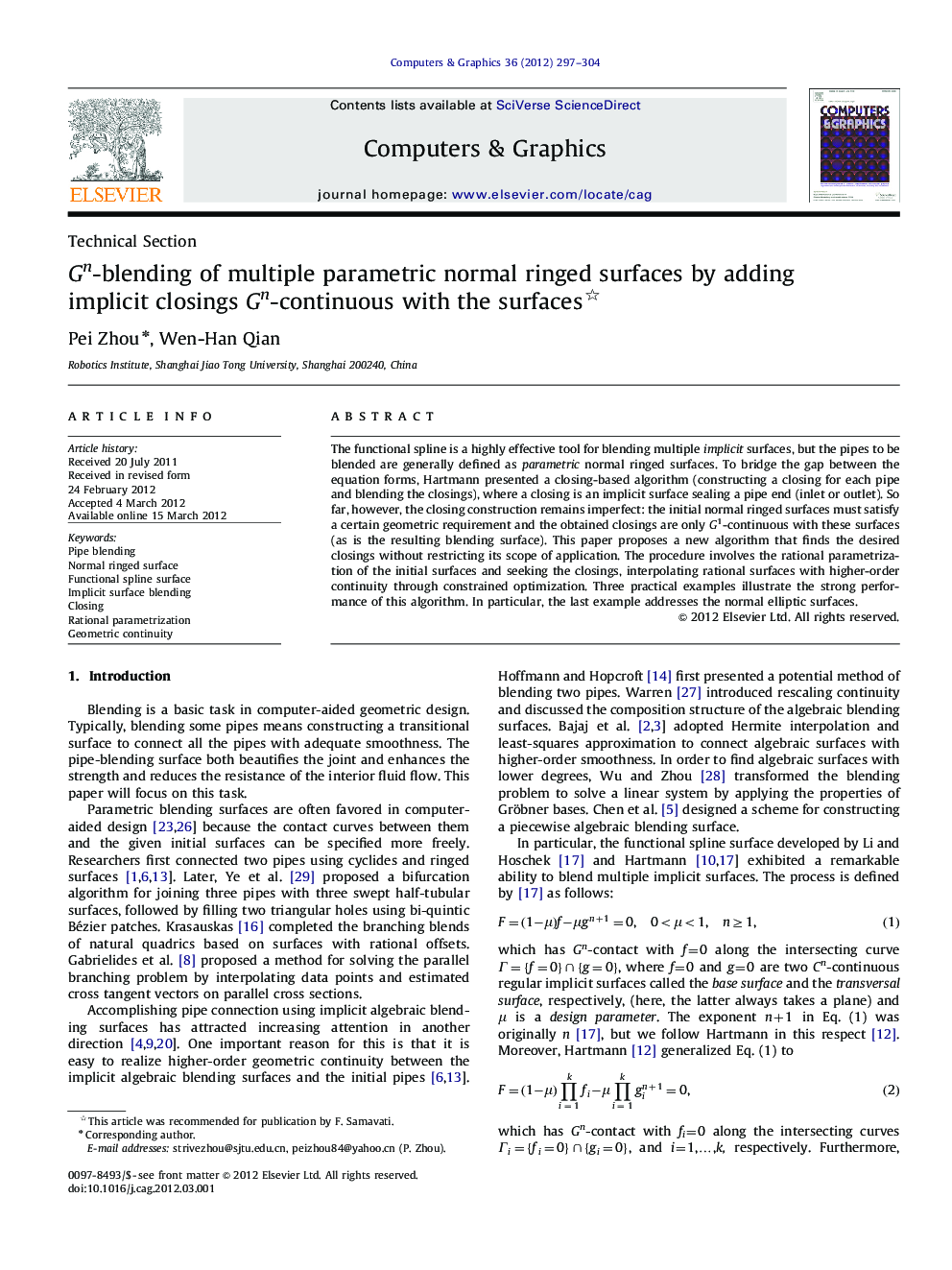| Article ID | Journal | Published Year | Pages | File Type |
|---|---|---|---|---|
| 442033 | Computers & Graphics | 2012 | 8 Pages |
The functional spline is a highly effective tool for blending multiple implicit surfaces, but the pipes to be blended are generally defined as parametric normal ringed surfaces. To bridge the gap between the equation forms, Hartmann presented a closing-based algorithm (constructing a closing for each pipe and blending the closings), where a closing is an implicit surface sealing a pipe end (inlet or outlet). So far, however, the closing construction remains imperfect: the initial normal ringed surfaces must satisfy a certain geometric requirement and the obtained closings are only G1-continuous with these surfaces (as is the resulting blending surface). This paper proposes a new algorithm that finds the desired closings without restricting its scope of application. The procedure involves the rational parametrization of the initial surfaces and seeking the closings, interpolating rational surfaces with higher-order continuity through constrained optimization. Three practical examples illustrate the strong performance of this algorithm. In particular, the last example addresses the normal elliptic surfaces.
Graphical abstractFigure optionsDownload full-size imageDownload high-quality image (70 K)Download as PowerPoint slideHighlights► Remove the limitations on the normal ringed surfaces in the previous work. ► Produce algebraic blending surfaces with Gn-continuity for multiple pipes. ► Construct closings with Gn-continuity for cylinders and cones in arbitrary poses. ► Widen the scope of the normal sections of pipes from circles to ellipses.
